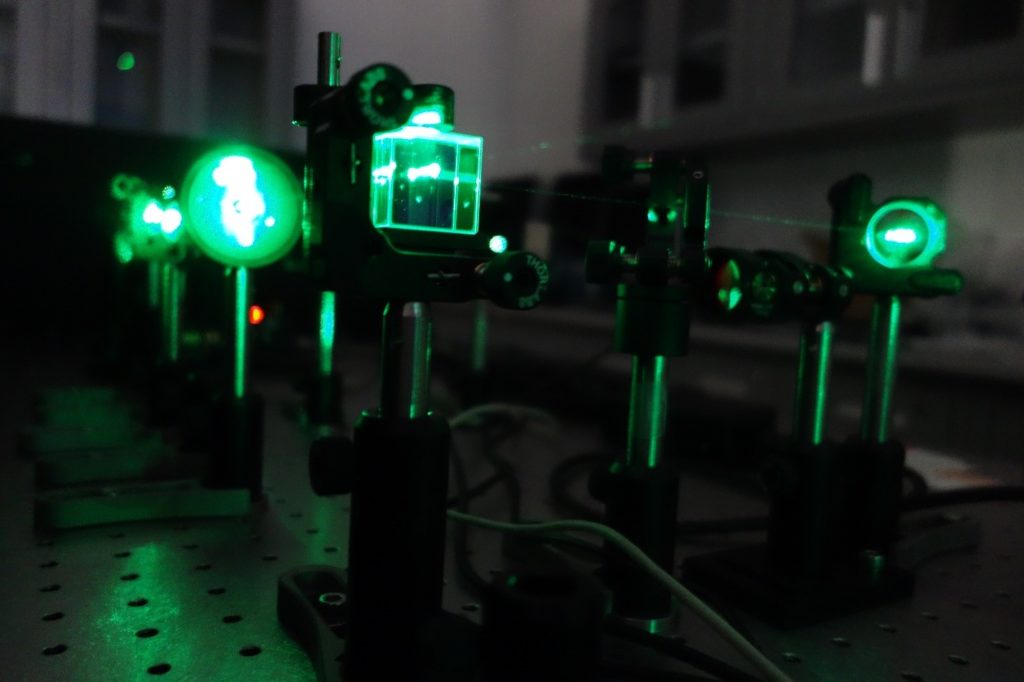Have you ever felt your cell phone or laptop overheat?
Controlling heat generation and overheating in electronics is an ongoing challenge in the race between faster-performing processors and thermal management.

The desire to improve processing power can lead to overheating, and in worst-case scenarios, the microprocessors in laptops or phones can generate heat comparable to that of a stovetop. Since processing units can easily overheat due to the energy that courses through them, engineers are constantly monitoring the heat management of electronics devices.
Researchers at the Lassonde School of Engineering, led by Simone Pisana, associate professor, electrical engineering and computer science, have been focusing on finding a solution to this problem by investigating the thermal properties of materials at the nanoscale.
“This work has implications in the design of electronic chips since more speed or memory results in a better performing processor. The issue is that higher frequency (the speed measured in gigahertz) results in more heat and managing that heat is a challenge,” said Pisana.
This is where his expertise with nanoscale materials offered new insights into heat transfer. Pisana’s team was able to determine that heat transfer occurs differently in layered metallic systems in the nano-scale regime as opposed to macro-(or human-) sized materials. It is the first time that this process has been demonstrated in conductive metallic materials at these sizes since traditionally this process was only known in insulating materials.

This work was published in ACS Applied Electronic Materials (2021) with the article title “Nondiffusive transport and Anisotropic Thermal Conductivity in High-Density Pt/Co Superlattices.”
“For more than 20 years the magnetic materials industry has been able to manufacture electronics parts down to the nanoscale, but the corresponding understanding of thermal properties at that scale has not kept pace,” said Pisana.
As an expert in magnetic materials, Pisana examined the thermal properties of typical magnetic memory materials (the same materials used to create hard drives and future high-speed memory chips). They tested the thermal properties of cobalt and platinum, a prototypical combination for magnetic memory materials.
Traditionally, heat transfer in macro-sized materials is dominated by the diffusion of energy-carrying particles through the material that can be described by simple equations, however, the exact mechanism behind heat transfer occurs between particles, electrons in this case, at the nanometer scale. When these electrons start interacting with materials that are of similar sizes, the non-diffusive transfer of heat begins to become dominant, and the physics describing the transport become much more complex.

“Non-diffusive transfer of heat is interesting from the design perspective, as all the traditional equations that we use to characterize heat transfer break down once we start to investigate materials at the sub-micron to nanoscale,” said Pisana. “The findings in this study tells us that we need to start using more complex models even in metallic systems. This in turn will help us understand how to improve heat dissipation in electronic and data storage devices.”
To do this investigation at the nanoscale, Pisana has an experimental facility funded by the Canada Foundation for Innovation (CFI) John Evans Leadership Fund (JELF) featuring a combination of lasers and sensors that allow for frequency-domain thermoreflectance (FDTR) – an effective method for investigating thermal properties at the nanoscale.
This work was led by Lassonde PhD candidate Mohammadreza Shahzadeh. There were also significant international contributions to this work. Olga Andriyevska, a doctoral student in Pisana’s research group, travelled to Germany through a Mitacs Globalink award to work with Chemnitz University of Technology Professor Olav Hellwig, a veteran researcher in magnetic materials.
Courtesy of YFile.
